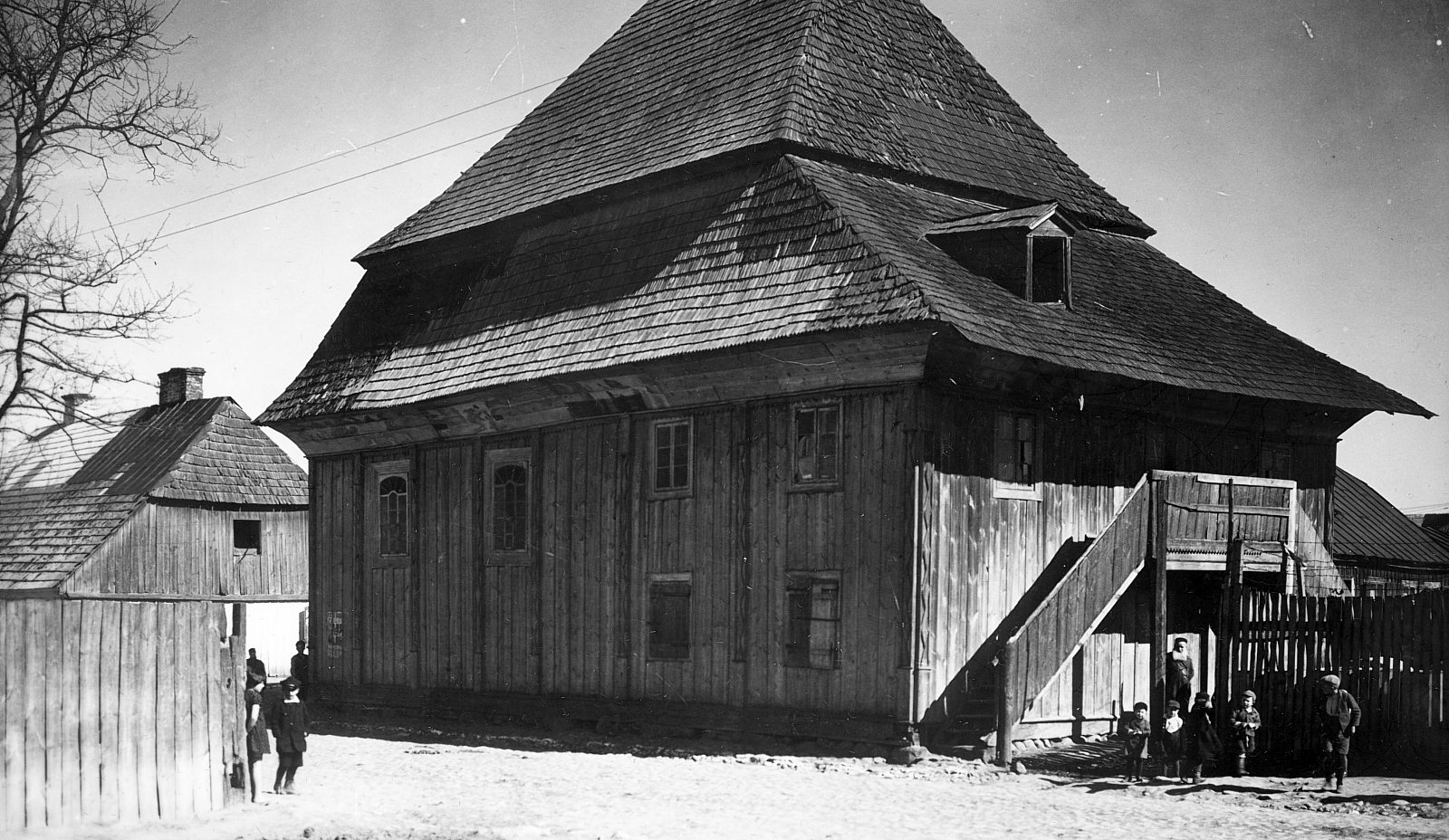 Eighty years ago, on February 21, 1941, Germans deported Jews from Warka and placed them in the Warsaw ghetto. The Warka ghetto was closed the very next day. In Wiktor Krawczyk's words: "In the early morning on February 21, 1941, Jewish people carrying hand luggage were divided by Germans into groups of fours, escorted to the railroad station, and put on a train to the Warsaw ghetto.
Eighty years ago, on February 21, 1941, Germans deported Jews from Warka and placed them in the Warsaw ghetto. The Warka ghetto was closed the very next day. In Wiktor Krawczyk's words: "In the early morning on February 21, 1941, Jewish people carrying hand luggage were divided by Germans into groups of fours, escorted to the railroad station, and put on a train to the Warsaw ghetto.
Many of the Warka Jews managed to get out of the city afterwards and hid in various places; some survived the war, but a vast majority of them died in Warsaw or in concentration camps. The ones caught hiding were murdered then and there... Poles helping Jews were also murdered."
The Jewish community in Warka dates back to the early 1500s, with the settlement intensifying again in the late 1700s. The biggest population influx occurred under the Prussian administration (1795-1807). A religious community was established before 1821. At that time, Warka became an important Hasidic center, mainly thanks to Izrael Icchak Kalisz (1779-1848), called Icchak of Warka and Rebbe (Rabbi) with son Mordechaj Menachem Mendel of Warka (1819-1868), called "Silent Tzadik." In 1897, Jews constituted 59.6% of the Warka population; in 1921–50.5%, and in 1938–39%.
Jews mainly worked in trade or were craftsmen, with some being members of the Town Council, and thus actively participating in the life of the local government. The wooden synagogue, built between 1811 and 1817, was considered one of the most beautiful pieces of architecture in Poland. It was situated between Długa and Senatorska Streets, which now houses a newsagent and an apartment building at Długa Street, at the current square of the First Fighter Regiment "Warsaw" in Warka. The synagogue was set on fire by German troops at the beginning of the occupation.
The Warka ghetto was called into existence in the fall of 1940 and located between Mostowa, Farna, Rynek and Dluga Streets. Jews were forbidden from stepping outside the ghetto, ordered to form a Jewish Council, and wear armbands with the Star of David. On February 21, 1941, they were led to the train station, and transported to the Warsaw ghetto and to concentration camps, most notably the one in Treblinka.
A few Jews hid at Polish friends and acquaintances. Those who survived the war returned to Warka, to leave the town again a few years later. Traces of Jewish presence in Warka can be found at the Jewish cemetery, located on a hill on the Pilica River, near the railroad bridge, at the end of Baczyńskiego Street. The necropolis was established in the late 1700s. In 1990, an ohel (a structure around the grave of a prominent Jew) was unveiled at the Warka Jewish cemetery at the supposed burial place of Izrael Icchak Kalisz.
A fragment of the permanent exhibition at the Casimir Pulaski Museum entitled “Warka–a place touched by history” was devoted to Warka Jews. Tourist trails in Warka lead visitors on a quest entitled the "History of Warka Jews." On the 80th anniversary of the Warka ghetto closing, the Casimir Pulaski Museum organized an online symposium entitled the "Jewish community of Warka." The list of speakers included historian and deputy director of the Historical Research Office of the Institute of National Remembrance in Warsaw Sebastian Piątkowski, PhD, who spoke about "The Jewish Community of Warka–between life and death. Their stories and fate in the interwar era and during the occupation"; Head of the Education Department of the Warsaw Ghetto Museum Halina Postek, PhD, who focused on “Warka Hasids;" followed by historian, journalist, columnist, descendant of the Warka Jews, grandson of Izrael Kohn, great-grandson of Izaak Boruch Kohn from Warka Jarosław J. Szczepański, who read a paper “How Janina Zofia Szwarcman remembered Warka" (Janina Zofia Szwarcman was the daughter of Felicja Kohn-Szwarcmanowa, granddaughter of Izaak Boruch Kohn and Chana Gitla Mokotow) to later ask in his own paper: "Is the memory of the Jews from Warka fading away?"
The symposium was streamed live on Facebook.


